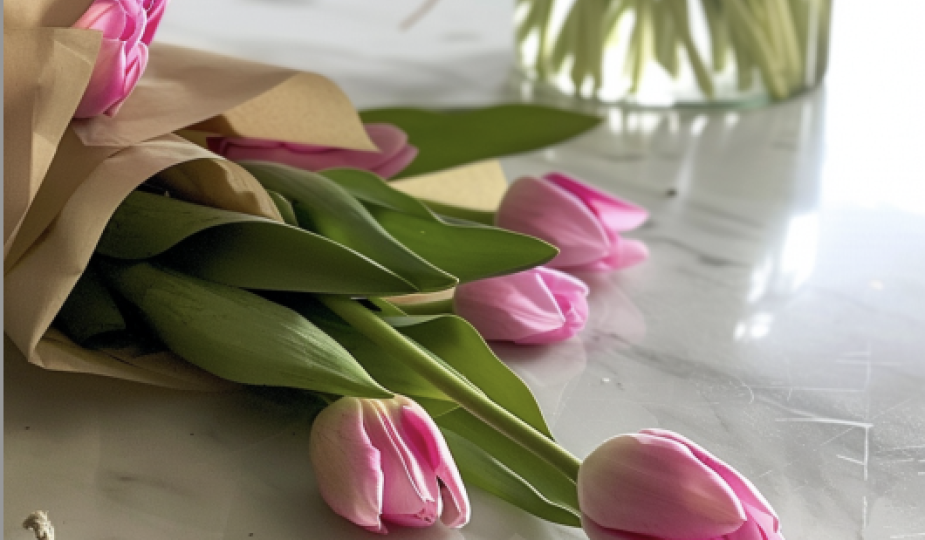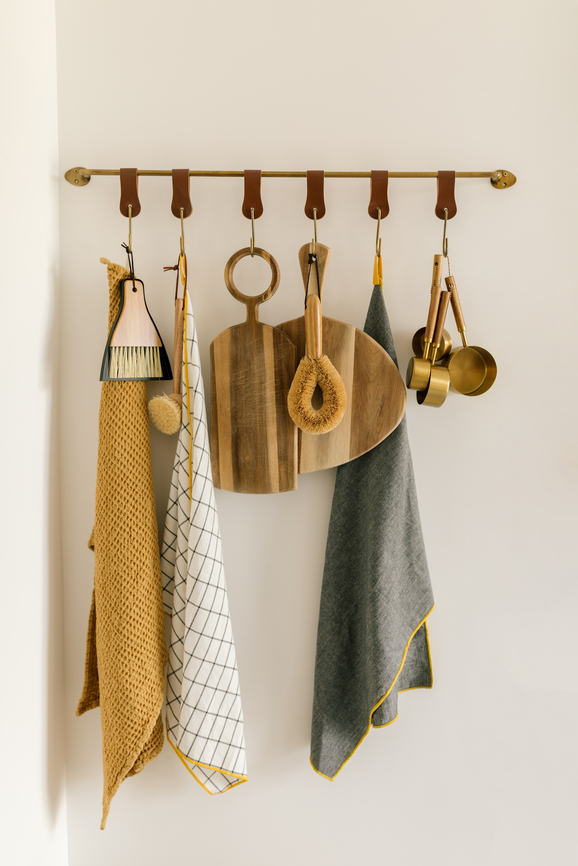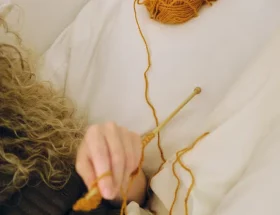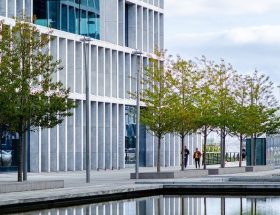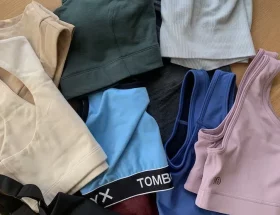If you’ve ever lived in (or even day-tripped through) a rural area, you understand the appeal of locally grown cut flowers. Throughout late spring, summer, and fall, farmstands and farmers’ markets beckon with bouquets of seasonal blooms, the stems often handed over by the very ones that tended them.
For Valerie Schirmer, president of the Association of Specialty Cut Flower Growers, flower farmers work better together. “Our mission [at the ASCFG] is to support specialty cut flower growers by creating accessible educational opportunities and research for growers at every stage in their development of financially sustainable businesses,” says Schirmer. “We build community through peer-to-peer learning and mentorship, and we share an interest in environmental sustainability and the pursuit of well-being and success.”
“Flowers serve as a decorative adornment and a communicative gift, carrying messages to loved ones through the language of natural beauty.”
The cut flower industry is currently valued at more than 35 billion USD, a figure that is only projected to rise. After all, flower power is universal and timeless. Flowers serve as a decorative adornment and a communicative gift, carrying messages to loved ones through the language of natural beauty. And while the flowers found at the supermarket or your favorite big box retailer may be lovely (sometimes preternaturally so) the imported iterations come with some environmental downsides that somewhat negate the beauty of our beloved blossoms.
Read on to learn more about cut flowers — and why you should invest in local flora whenever possible.
The environmental case for local blooms
To begin, choosing local cut flowers cuts your carbon footprint. “Approximately 80% of the flowers customers purchase in the U.S. are imported,” says Kathleen Ferguson, Los Angeles-based landscape designer and owner of Frogtown Flora. Along with African countries like Kenya and Ethiopia, Schirmer lists Colombia, Ecuador, Mexico, the Netherlands, and Israel as the most popular suppliers. According to a 2022 study published by the “Journal of Cleaner Production,” mass flower cropping has several direct environmental and humanitarian impacts on the most popular importing countries. Ethiopia, for example, has experienced land shortage, water scarcity, and pollution, all caused by cultivation, with similar issues reported by other countries.
“Choosing local cut flowers cuts your carbon footprint.”
“You wouldn’t believe what goes into the flowers that U.S. consumers buy from grocery stores,” says Lennie Larkin, founder of B-Side Farm based just north of Portland, Oregon. “These flowers are grown overseas, often with lots of chemicals and often using unsavory labor practices. The flowers go through all sorts of torture in order to be shipped to distributors in the U.S., to grocery stores, and finally to consumers.”
Pesticides aside (we’ll get to that in a bit), imported flowers come with a sizeable water footprint (a single rose is estimated to require 7–13 liters), industrial greenhouses and chemical runoff, and ample carbon emissions courtesy of air travel (the International Council on Clean Transportation estimates that 2018’s Valentine’s Day roses burned 114 million liters of fuel and emitted approximately 360,000 metric tons of CO2 on their trip to the U.S. from Colombia). Add to that poor land and water management, chemical runoff, the refrigeration necessary for travel, and shipping container waste and those perfect stems start to look less appealing.
Fortunately, flower farming is gaining popularity in the States, with more than 31,000 acres of flowers grown in the open (with even more grown in greenhouses) in 2022, an increase of 33% from the 2017 census. Long story short, there are likely flower farmers in your area ready to supply you with gorgeous blooms that are good for your home and the planet.
The many benefits of flower farms
Local flowers aren’t just better for your conscience, they’re also available in a wider variety and are often chemical-free. “Some of the best and most beautiful cut flowers — such as dahlias, zinnias, cosmos, poppies, anemones, ranunculus, and many more seasonal beauties — don’t ship well,” says Schirmer. “Since local flower farmers grow a wide variety of florals (flowers, foliages, herbs, berries, perennials, flowering branches, fruits, fresh/dried/preserved florals, etc.) and because we don’t operate in a monoculture production environment as importers do, we typically have fewer insect problems. Many of our growers work to be pesticide-free; it’s common knowledge that florists who rely on imported florals must wear gloves when they process and handle them to protect their skin and immune systems.”
“It’s common knowledge that florists who rely on imported florals must wear gloves when they process and handle them to protect their skin and immune systems.”
– Valerie Schirmer, president of the Association of Specialty Cut Flower Growers
Flowers from local farms have a longer vase life, too. “These flowers are cut by the grower and sold directly to the consumer at a farmstand or a farmer’s market,” says Larkin. “Even if they’re sold to a wholesaler or a florist, they can often be cut and in the customer’s hands just a few days later.”
Supporting your area flower farms also lets you get to know the growers and the land you live on, enhancing appreciation for all facets of your flowers. “There’s a real chance for the consumer to get in touch with the local season — to know what’s growing in their area and have a real sense of place,” says Larkin.
Flower farms and community
Flowers bring people closer to each other and to nature, and flower farmers center this community in their work. Directing your purchasing power toward these farms bolsters your community in more ways than one.
“Sourcing cut flowers locally is a way to keep dollars in the community,” says Larkin. “You are paying a farm that is in turn paying local employees, local soil companies, etc. It has cascading positive effects.”
“You are paying a farm that is in turn paying local employees, local soil companies, etc. It has cascading positive effects.”
– Lennie Larkin, founder of B-Side Farm
Community can also be felt within the industry itself, with growers championing one another and sharing learnings along the way. “Flower farmers are incredibly supportive of each other and generous with their knowledge,” says Ferguson. “We share growing and harvesting tips and flower inspirations, and happily refer customers to fellow farmers.” Larkin agrees. “My favorite aspect of the flower farming industry is the sense of community and the way that flower farmers have each other’s backs,” says Larkin. “I’m so uplifted and inspired by my students (who are flower farmers). They’re such hard workers and are building beautiful businesses.”
Finally, your local growers care for their garden with visitors in mind. “The flower farm has been a place of healing for me, but also a place for others to come and enjoy some peace and serenity in nature,” says Krista Weed, founder of Hudson Wildflower Co. in Milton, New York. “From the start, I knew that this business I was creating was bigger than just flowers. I have had countless messages, DMs, letters, and emails from people who wanted to write to me and let me know how healing this place is for them. Flowers bring people happiness.”
Tips for buying and keeping flowers
Life isn’t perfect, which means all of us will likely purchase a bouquet from a larger retailer from time to time. But whether you buy your blossoms from the grocery store or your go-to grower, certain steps ensure that the bouquets you buy are of the best possible quality and prepped for maximized time in your (or your loved one’s) vase.
1. SAY NO TO PESTICIDES
“Be sure to buy fresh and pesticide-free blooms,” says Ferguson. “The best way to ensure both is to buy from trusted sources which can be smaller specialty markets or farmer’s markets. Or better yet, get to know your local flower farmers and buy directly from them!”
2. LOOK FOR BUDS
“When buying from a grocery store or other mass marketer (such as Costco), look for flowers that have lots of buds, with none drooping or looking old or bedraggled,” says Schirmer. “You’ll want to find the freshest bouquet in the bucket so it will last longer.”
3. TRIM YOUR STEMS
“Recut the stems as soon as you get your flowers home,” says Weed. “Cutting at a 45-degree angle with a sharp scissor or shear gives your stem more surface area to absorb water up through the stem.” Also remove any leaves beneath the water line, as they can increase bacterial build-up. Repeat the process, snipping a quarter inch and refreshing water every 1-2 days.
4. KNOW YOUR GROWER
“For local flowers, get to know your flower farmer!” says Shirmer. “That way you’ll know what’s coming into bloom, what you can expect during different times of the year.” A bouquet with a side of education, yes please.
4. REMEMBER: FLOWERS ARE EPHEMERAL
“It’s important to remember that flowers are a part of nature: they are not meant to live forever,” says Weed. “They are here to bring us joy and happiness for a short time.” Don’t let them linger too long on your counter which can lead to bacteria building up in the water. You’re investing in a moment!
So, next time you’re picking up produce at the farmer’s market or making a visit to your local florist, pay extra attention to where your flowers are coming from. Connecting with local flower farms offers so many benefits — from healthier options to education and even community connections — why not dig in deeper? To start, use this interactive map from the ASCFG to look up local growers and purveyors near you.
Calin Van Paris is a freelance writer and editor specializing in beauty, wellness, and lifestyle. In addition to crafting language, you can find her exploring the planet, picking flowers and vintage, and reading anything that enriches her experience.
